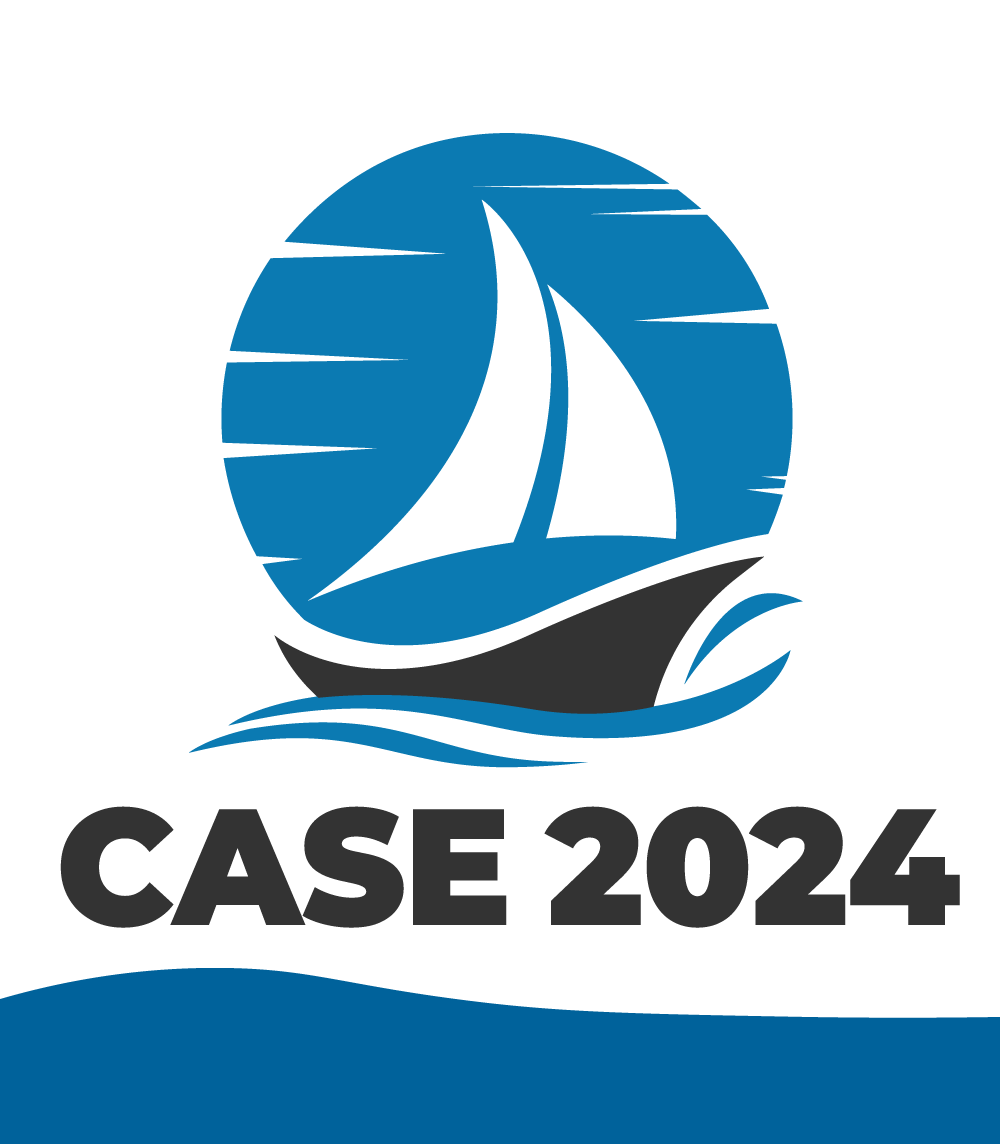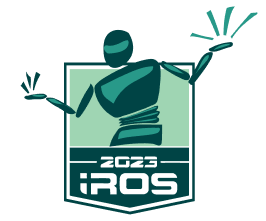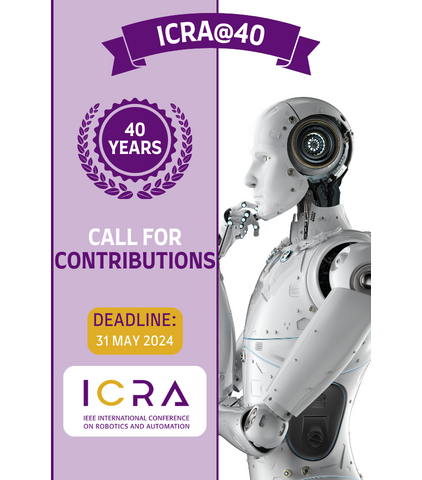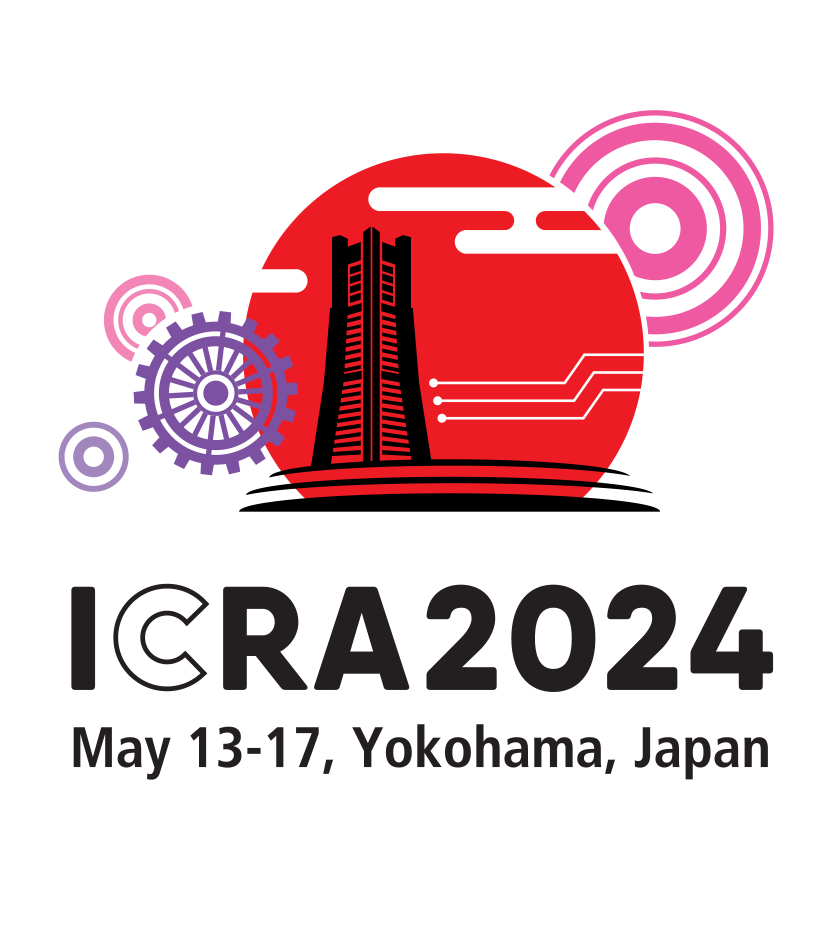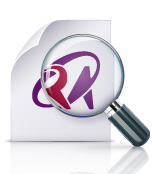Information for Authors
T-ASE paper submission and review processing have been moved to the new ScholarOne Manuscripts. Instructions for authors are provided on-line at the site. If you have difficulties, please contact Editorial Assistant Rebecca Hytowitz, (r.hytowitz@ieee.org) or the Editor-in-Chief Yu Sun - T-ASE EiC ( tase.eic.sun@outlook.com).
- NEW - IEEE Open Access - T-ASE is a Hybrid Journal; authors can request OA for $2495 for all articles accepted on or after 1 January 2024.
- Template for T-ASE journal papers
- NEW-Abstract Description and Specification
- NEW - Author Checklist for New Papers and Resubmissions
- NEW - Author Checklist for Final Papers
- The Note to Practitioners
- IEEE Tools for Authors - This link contains LaTeX template and Word template for paper preparation, IEEE information for authors, and the following items needed only for papers that have already been accepted and are being prepared for final publication: Guidelines for Author-Supplied Electronic Text and Graphics, Copyright information and form, and Reprint Information.
- T-ASE procedure manual
- Frequently Asked Questions
Detailed Author Information
Automation plays an increasingly important role in the global economy and in our daily lives. Engineers strive to combine automated devices with mathematical and organizational tools to create complex systems for a rapidly expanding range of applications and human activities. To meet these challenges, the IEEE Robotics and Automation Society has established a major archival journal on Automation Science and Engineering to publish the abstractions, algorithms, theory, methodologies, models, systems, and case studies that can be applied across industries to significantly advance efficiency, quality, productivity, and reliability for society.
The quarterly IEEE TRANSACTIONS ON AUTOMATION SCIENCE AND ENGINEERING publishes foundational research on Automation: Scientific methods and technologies that improve efficiency, productivity, quality, and reliability, specifically for methods, machines, and systems operating in structured environments over long periods, and the explicit structuring of environments. Its coverage will go beyond Automation's roots in mass production and include many new applications areas, such as Biotechnology, pharmaceutical, and health care; Home, service, and retail; Construction, transportation, and security; Manufacturing, maintenance, and supply chains; and Food handling and processing. Research includes topics related to robots and intelligent machines/systems in structured environments and the explicit structuring of environments, and topics at the Operational/Enterprise levels such as System Modeling, Analysis, Performance Evaluation; Planning, Scheduling, Coordination; Risk Management; and Supply Chain Management.
T-ASE integrates knowledge across disciplines and industries and, for this purpose, each paper shall include a 100-300 word Note to Practitioners that summarizes without jargon how its results can be applied or how they might be extended to apply in practice to practical problems, thus making the paper more broadly accessible. Writing a good NtP is a challenge. Rather than simply restating the abstract and introduction to the paper in less technical terms, authors are asked to describe the potential and limitations of the work as though they were addressing a colleague from industry. A sample NtP can be found here.
The Transactions publishes both Regular Papers and Communication Items. Communication items are a separate class of manuscripts that are appropriate mainly for rebuttals and/or counter examples of previously published papers. Communication items are subject to an expedited review process. Normally, the editors will review these submissions internally, although they will request outside review when appropriate. Please note that T-ASE permits a maximum of one Revise and Resubmit decision. Articles that exceed that number may be immediately rejected.
Review papers are published periodically, and unsolicited manuscripts of a tutorial or review nature are welcome. It would be advisable for prospective authors of such papers to contact the Editor-in-Chief in advance of submission concerning probable interest. Papers describing specific current applications are encouraged, provided that the designs represent the best current practice, detailed characteristics and performance are included, and they are of general interest. Multipart papers will only be published if there is compelling rationale for a multipart treatment. All parts of such submissions must be accepted for any part to be published.
Peer Review Model
Please note that T-ASE uses Single-Anonymous Review.
The articles in this journal are peer reviewed in accordance with the requirements set forth in the IEEE Publication Services and Products Board Operations Manual (https://pspb.ieee.org/images/files/files/opsmanual.pdf). Each published article was reviewed by a minimum of two independent reviewers using a single-anonymous peer review process, where the identities of the reviewers are not known to the authors, but the reviewers know the identities of the authors.
Ethical Issues
Manuscripts should be original, previously unpublished work not currently submitted to any other publication. It is the responsibility of the authors, not the IEEE, to determine whether disclosure of their material requires the prior consent of other parties and, if so, to obtain it. If authors make use of charts, photographs, or other graphical or textual material from previously published material, the authors are responsible for obtaining written permission to use the material in the manuscript.
IEEE defines plagiarism as the use of someone else's prior ideas, processes, results, or words without explicitly acknowledging the original author and source. Plagiarism in any form is unacceptable and is considered a serious breach of professional conduct, with potentially severe ethical and legal consequences. Self-plagiarism is also unethical. If authors have used their own previously published work(s) as a basis for a new submission, they are required to cite the previous work(s) and briefly indicate how the new submission offers substantively novel contributions beyond those of the previously published work(s).
Multiple submissions to different journals are unacceptable and are subject to disciplinary actions. This applies to the entire period in which a paper is under T-ASE review. It is the responsibility of the authors to clearly spell out the differences of their submitted papers with similar content, and any common part should be clearly indicated. If in doubt, please contact the EiC.
Procedures for Submission of Manuscripts
T-ASE paper submission and review processing can be accessed at the new ScholarOne Manuscripts. Instructions for authors are provided on-line at the site.
Copyright
It is the policy of the IEEE to own the copyright to the technical contributions it publishes on behalf of the interests of the IEEE, its authors, and their employers; and to facilitate the appropriate reuse of this material by others. To comply with U.S. copyright law, authors of accepted papers are required to complete an IEEE electronic copyright form (ECF) on ScholarOne Manuscripts when they submit their final package for publication. This form returns to authors and their employers full rights to reuse their material for their own purposes upon request.
Page Charges
A voluntary page charge form ($110/page) is sent to the authors of accepted papers with proofs, and the author is encouraged, whenever possible, to make a contribution to defray part of the publication cost. A mandatory overlength page charge is imposed on all regular papers whose length exceeds ten TRANSACTIONS pages, including illustrations. This charge is $175 per page of each page over the first ten based on the final typeset length and not on manuscript length, and is a prerequisite for publication. The same policy applies to communications exceeding six TRANSACTIONS pages.
Style of Manuscript
Manuscripts should be submitted in a double column format using an IEEE style file. Submitted papers should be close to the intended length to facilitate prompt review. Submitting long papers and then reducing length after review is strongly discouraged. This charge is $175 per page of each page over the first 12 pages for Regular.
Uploaded information: A cover letter, an abstract (up to 200 words for Regular Papers and 50 words for Communications), a Note to Practitioners right after the abstract, keywords, and the type of paper (Regular or Communication Item).
All figures must be numbered and cited in text. Use consistent font and size in all figures and tables, and choose sizes that will allow the text to be scaled to 8 points at final printed size. Otherwise, an entire figure may be enlarged so that the smallest size is scaled to 8 points for readability.
After acceptance, the following will be required: All line drawings (graphs, charts, diagrams, etc.) should be prepared on a white background in black ink. Lettering should be large enough to be readily legible when the drawing is reduced to two- or one-column width - as much as 4:1 reduction from the original. Include a separate list of figure captions with the manuscript. Original illustrations and photographs must be sent upon acceptance of the paper.
References must be in a separate reference section at the end of the paper in IEEE style, with items referred to by numerals in square brackets. For journal articles: Author initials followed by last names, title in quotation marks, periodical, volume, inclusive page numbers, year; for books: Author initials followed by last names, title, location, publisher, year; and for conference papers: Author initials followed by last names, title in quotation marks, conference, location, month and year, and inclusive page numbers.
Authors of regular papers are requested to send current biographies (no more than 100 words) and recent photographs at the time of paper acceptance. Electronic photos in .tif and .eps formats are acceptable and preferred to photographs. If photographs are used, they should be glossy prints of high contrast, without spurious marks.
We are now able to accept color figures for web-only publication in IEEE Xplore while publishing black and white figures in the printed issue at no additional cost. Color images should be formatted and saved using a suitable graphics processing program that will allow you to create the images as PS, EPS or TIFF files, size them, and adjust the resolution settings. If you create your source files in Microsoft Excel or PDF, you will be able to submit your graphics without converting to a PS, EPS or TIFF file. All color graphics should be saved at a resolution of 400 DPI and at the size the image will be printed. Graphics can be checked on the IEEE Author Center. The publisher requires both hard copies and electronic files of each color figure.
Galley proofs of accepted articles will be sent to the corresponding author. For further information, see Information for IEEE Transactions and Journal Authors.
Chinese, Japanese and Korean (CJK) Author Names
IEEE supports the publication of Chinese, Japanese, and Korean (CJK) author names in the native language alongside the English versions of the names in the author list of an article. For more information, please visit the IEEE Author Center.
Submission of Multimedia Material
T-ASE is now accepting multimedia materials accompanying the submission of a paper. Multimedia can be "playable" files (.mpeg, .avi, .wav, .mov, .midi, etc.) or "dataset" files (e.g., raw data with programs such as Excel to manipulate them). Such material is intended to enhance the contents of a paper, both in clarity and in added value. Please refer to the RAS Video Submission Guidelines, and please also follow IEEE general guidelines for the preparation and submission of multimedia, including the format, description of content, user requirements, the way this material should be referenced to in the body of the paper, etc. This information is available on the IEEE Author Center. In addition, T-ASE requires that such a paper should be self-contained, i.e., fully readable and understandable independently from the multimedia material; and only freely available media players (e.g., QuickTime, RealPlayer, Microsoft Windows Media Player) should be required by users. Multimedia materials should be submitted with a "ReadMe" file describing the minimum requirements for a user, and should contain a brief description of the multimedia content. The multimedia material will be reviewed together with the submitted paper. Once a paper and its associated multimedia material is accepted, the latter will be available on the T-ASE page within IEEE Xplore, back to back with the pdf file of the paper.
Final Acceptance in Electronic Form
Submission of final papers to IEEE after acceptance must be in electronic form. Authors unable to submit electronically should contact the Editor-in-Chief. The IEEE will accept electronic media together with hard copy for publication according to the following guidelines:
- The operating system and word processing software used to produce the document should be noted on your disk (e.g., Unix/LaTeX, Windows 98/Word). In the case of UNIX media, the method of extraction (i.e., tar, bar, dump) should also be noted.
- The hardcopy should match its companion disk exactly. Any changes that have been made to the hardcopy should be incorporated into the disk.
- The disk should be labeled with the file name(s) relating to the manuscript.
- No program files should be included on the disk.
- Package floppy disks in such a way as to minimize possible damage in transit.
- Include a flat ASCII version on the disk as well as the work-processed version, if possible.
- Adhere to the accepted style of this TRANSACTIONS as much as possible. While many processing programs are acceptable, there are preferred programs that, when used, substantially reduce costs incurred to the IEEE Robotics and Automation Society. TeX and LaTeX are preferred. Microsoft Word also somewhat reduces costs incurred. IEEE style files are available from our web site as noted above.
The following points are important when submitting electronic manuscripts in TeX or LaTeX:
- Include all macros (\def) that are required to produce the document. However, it is suggested that authors keep user-defined macros to a minimum.
- IEEE TRANSACTIONS style dictates a 21-pica (3.5-in) column width. If mathematical phrases are produced with this in mind, they are apt to appear aesthetically pleasing in the final version.
At IEEE, LaTeX style files can be obtained at the IEEE Author Center.
Inquiries
All pertinent correspondence relating to publications should be sent to the Editor-in-Chief. For administrative inquiries, please contact the Editorial Assistant.



